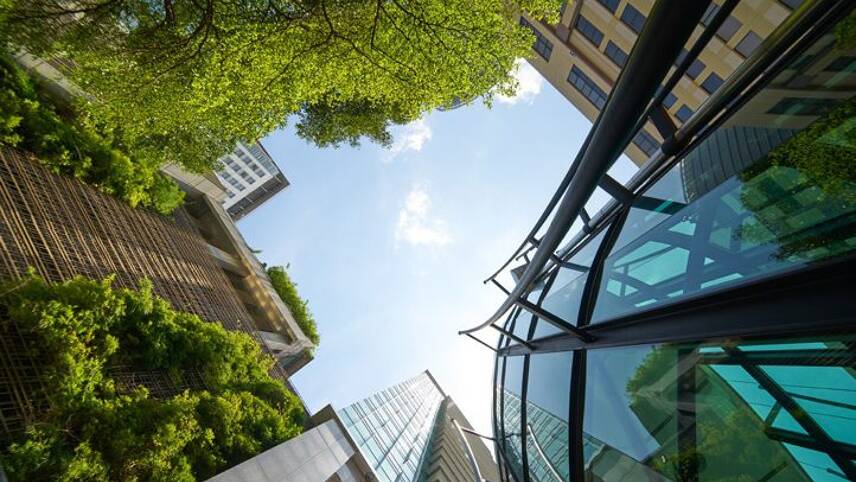Register for free and continue reading
Join our growing army of changemakers and get unlimited access to our premium content

When I started, sustainability professionals were normally kept in the corner, had minimal influence over business decisions and were only really called upon when the organisation got into trouble with the neighbours and stakeholders – or when Greenpeace invaded the site to protest about the use of illegal timber.
Luckily, attitudes have changed and we’re now seen as integral parts of business strategy, with several organisations having c-suite sustainability professionals within their executive teams.
In the UK, one of the major turning points was the London 2012 Olympics, which aimed to be the most sustainable games ever. The Sustainability Team, led by Christian Bonard, really pushed the boundaries for sustainability in design and construction of the facilities, whether through the technology to ensure efficiency or the material selection, led by Kirsten Henson. Every aspect of each structure or asset was reviewed, and viable sustainable alternatives introduced, such as the foam-mix alternative for asphalt or the responsibly sourced and tracked copper for the Copper Box Arena.
Since then, the sector has changed profoundly, with the emergence of private investment and their interest in Environmental, Social and Governance issues (ESG). Ethical investment has been around for years – but only on the fringes. Recently, however, it’s become mainstream. In September 2015, Mark Carney (the then Governor of the Bank of England and Chairman of the Financial Stability Board) gave his milestone ‘tragedy of horizons’ speech at Lloyd’s of London.
This pivotal moment has resulted in more investment. Financial institutions have increased their ESG demands on their assets, and demand improvements of their performance to keep up with the external pressures, such as those from the Task Force for Climate-Related Financial Disclosure. In turn, this has led to assets within their portfolios improving their ESG performance.
The construction of the Thames Tideway Tunnel is a good example of a privately funded project, which already had high standards of ESG performance but has used the close working relationship between the Sustainability and Finance teams to its advantage in securing the majority of its financing through sustainable means.
When the project started, we already had a set of 54 targets covering all aspects of sustainability, from the employment of people with convictions, reducing carbon, to increasing the use of the river as a means of mass haul of materials. However, over the past few years, the increase in interest in ESG from our four main investors – Amber, DIF, Allianz and Dalmore – has been astronomical. Irrespective of the size or background of the organisations, all four share a desire for data to demonstrate that the project is managing their ESG risks and delivering social value.
My role on the project, as Head of Sustainability, has changed dramatically since the project started construction five years ago. While we still have a raft of experts from various backgrounds working on design and carbon, such as Samantha Freelove who led on much of the design work on London 2012 and Bruno Guillaume who has been involved in the delivery of major programmes such as Channel Tunnel Rail Link, Thameslink and Crossrail, much of my time is spent working on the financial side of things with the investors either responding to their ESG assessments or co-ordinating the production of our annual sustainable finance reports with our Treasurer, Ines Faden. Both of our teams share a passion for integrating the United Nations Sustainable Development Goals into our business strategy, and showing how an infrastructure project can make a significant contribution towards several of the targets and goals outside of the prime purpose of the asset, which is to prevent wholesale pollution of the River Thames.
Since November last year, I’ve been seconded into one of our investors, Dalmore, to peer review their development of the ESG framework and reporting, which was an excellent opportunity to use the experience of practical implementation of sustainability and to share the examples of best practice within their portfolio to hopefully raise the performance of those that are just embarking on the journey.
Hopefully, through events such as the edie conference on Sustainable Investment in September and their recent webinar on climate disclosure, you will see that more people from the sustainability backgrounds are now moving into the financial sector to bridge the gap between ESG and finance which is an exciting development for our profession.
edie’s ESG Handbook 2020
Green finance and ESG investing were reaching a tipping point, then the coronavirus pandemic swept across the world. The virus hasn’t so much as tipped the scales towards ESG investing but rather poured most of the world’s financial system towards it.
If businesses want to assist with national and global efforts to build back better, aligning to ESG reporting requirements is one way to ensure the finance is funnelled into a global
green recovery.
As such, sustainability professionals can download a new report, sponsored by UL and created in association with edie’s Sustainable Investment Virtual Conference, will explain the complexities of ESG and outline best practice applications for businesses.
The report examines all the key considerations across all three ESG pillars and explores where the data fits into the current reporting landscape. Expert viewpoints are also provided by UL and CDP, outlining the importance of ESG to the investor community. Case studies linking through to in-depth stories also feature.



Please login or Register to leave a comment.